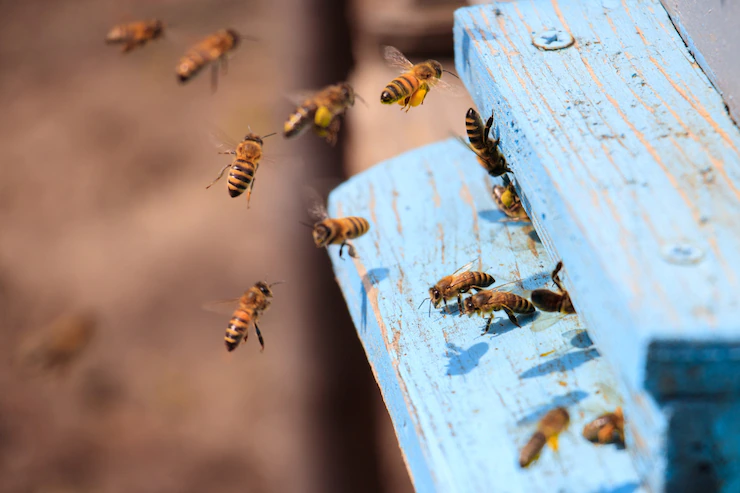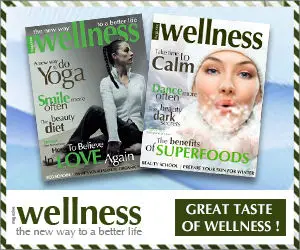With bees so much in the news these days, we are all learning more about them and their ways. These little insects are experiencing many problems on a global level. Their numbers are decreasing due to loss of habitat, illnesses, viruses, the increasing use of pesticides, and more. Recently, it was discovered that many bee colonies were disappearing during the course of the day. The bees start out by leaving in the morning to do their work but are not returning home to the beehive at the end of their work day. This phenomenon has been called Colony Collapse Disorder and it can become a very serious situation.

We know now that bees are crucial for our food supply. They perform the important job of pollinating plants. The process of pollination makes it possible for plants to fully mature so that they can yield crops. Without bees, there would be a lot less pollination and our food supply would be drastically reduced.
It is of utmost importance that people appreciate the important role these powerful pollinators play in the global food cycle. For that reason alone, the focus needs to be placed on research to find ways to help save the bees. But believe it or not, bees offer a lot more to humanity than their expertise at pollination. There are other reasons why we should do all we can to protect them.
In addition to making it possible for us to have food to eat, bees are very busy manufacturing unique substances in their beehives that are very nutritious. I want everyone to find out just how beneficial these beehive materials really are. Then we will all be totally impressed by these tiny, but very determined bee-ings.
I will begin by telling you about honey, a sweet liquid found in the cells of the beehive. Honey, a supremely nutritious sweetener, is considered by many to be as valuable as if it were liquid gold.
My first memorable experience with honey was many years ago, when my husband, Richie, and I lived in rural Maine. We had moved to Maine from New York in order to become organic farmers. At that time, I was changing my eating habits and making healthier choices. I had been experimenting with using honey instead of sugar, and because I was using so much of it, we decided to purchase honey in bulk. We were directed to a local beekeeper that kept honeybees on his property and had large containers of honey for sale.
I will never forget this peaceful gentleman. When we arrived at his farm he led us into his shop full of very large honey tins. There were many different kinds of honey to choose from, different flavors, and different colors. He asked us to taste the honey by just dipping our fingers right into the honey containers. “Don’t worry about contaminating the honey as you dip your finger into it, bacteria do not grow in honey”, he explained to us in his New England accent. And so we tasted the different kinds of honey by placing our fingers right into the honey, licking them and repeating the process with other honey containers. To think that this gooey stuff remained pure even after coming in contact with our germs, was almost unbelievable. It was at this moment that I became totally fascinated by honey.
Some people feel that honey contains all the necessary nutrients for life. In Greek mythology, when Zeus was a baby, he was being cared for by bees who fed him, honey, while he was hiding in a cave. Later on, Zeus rewarded the bees by giving them intelligence. Maybe that explains why bees are capable of doing so much.
The process of making honey begins when bees extract nectar, a sweet substance secreted by flowers, mix it with their own enzymes and store it in their tiny stomachs as they fly around all day. When they return to the hive, this mixture is then transferred to the little cells that make up the honeycomb. Here the water evaporates and the nectar mixture then thickens into honey.
While we do know that most microorganisms do not grow in honey, it does contain spores of the botulism bacteria. If ingested by infants, these spores can create botulism toxin in their immature digestive tracts and become poisonous. So please be sure not to give honey to children that are under one-year-old.
Containing 35% protein, this syrupy sweet is a wholesome food. Rich in vitamins such as niacin, riboflavin and pantothenic acid, minerals such as calcium, copper, iron, magnesium, manganese, phosphorus, potassium and zinc, amino acids, and antioxidants, honey is a great source of energy.
Research suggests that honey can relieve both constipation and diarrhea, promote healing and prevent infections. Honey also has strong anti-bacterial properties. In a study of people with stomach ulcers who were given 1 tablespoon of honey four times a day, everyone taking the honey experienced a significant decrease in stomach ulcer symptoms. It is widely believed that bacteria play a major role in most stomach ulcers.
If you are concerned about raising your blood sugar levels, you may consider consuming Tupelo honey. Because Tupelo honey contains more fructose than other honey, it is absorbed at a slower rate. Note also that Tupelo honey is very light in color, making it ideal for baking.
When cooking with honey, bear in mind that it’s much sweeter than sugar, so that you can replace 1 cup of sugar with ¾ cup of honey, also make sure that you reduce some of the liquid in the recipe.
Since honey never spoils, it does not need to be refrigerated. It can be stored in your kitchen cabinet indefinitely. If, after a while, it becomes crystallized, all you need to do is place the jar in warm water for a few minutes.
Known also to relieve respiratory ailments, the next time you feel a cold coming on, put up your feet and have a cup of warm water, or tea, sweetened with honey. You will feel better as soon as you start sipping.

Royal Jelly is another miraculous substance found in the beehive. A milk-like secretion produced from the head glands of nurse worker bees, this substance contains high amounts of B vitamins, calcium, iron, potassium silicon, enzymes, sex hormones, all eight essential amino acids and more. Royal Jelly is what turns an ordinary bee into Queen Bee. Thanks to a diet of Royal Jelly, Queen Bees live 60 times longer than other bees and lay more eggs than any other insect in the world.
It is known to be a natural antibiotic, to stimulate and strengthen our immune system, to promote mental alertness and cell longevity, to alleviate stress and fatigue, to fight insomnia and to improve the health of our skin and hair. Royal Jelly also helps to keep our glands well balanced by revitalizing and rejuvenating our endocrine system.
There are physicians who will recommend Royal Jelly to combat bronchial asthma, liver and kidney disease, inflammation of the pancreas, gall bladder problems, digestive disorders, stomach ulcers, bone fractures, migraine headaches, and skin disorders. These uses of Royal Jelly illustrate the well-known adage, “Food should be medicine and medicine should be food”.
You can find Royal Jelly in capsules, in powder form, and in honey blends. For overall good health, I like to add a teaspoon of Royal Jelly mixed with honey to steaming hot tea during my mid-morning break.
Somewhat mysterious, Propolis is another beneficial substance provided by the bees. Also known as “bee glue”, it is a resinous substance collected from buds or tree bark. Used by bees to construct their beehives, it protects the beehive from infections. Rich in anti-oxidants, recent research has shown it to combat cancer in laboratory tests. It also seems to enhance our resistance to infection by stimulating the thymus gland. Usually found in liquid extract, this amazing substance is also available in capsules, lozenges, and tablets. It has been found to be beneficial in fighting colds, dry cough, pneumonia, ulcers and even acne. With anti- bacterial, antiviral, and anti-inflammatory properties, it is being used successfully in the management of arthritis. In addition, people who take Propolis may be decreasing their chances of heart disease. Research has demonstrated that this resin helps to lower blood pressure and reduce arteriosclerosis. It can also be used to treat gum disease and other mouth disorders. In tincture form, it can be applied directly on the skin to treat warts and herpes lesions.
Finally, it’s time to talk about Bee Pollen. Pollen is in a class by itself. A food with Super Powers, it is composed of 15% protein, B-complex vitamins, Vitamin C, essential fatty acids, enzymes, carotenoids, calcium, copper, iron, magnesium, manganese, potassium, sodium, plant sterols, some simple sugars and all eight essential amino acids. Providing instant energy, Pollen is used by athletes worldwide. It has been proven to be beneficial when consumed by those who are recovering from illnesses and by those who are suffering from respiratory or intestinal problems. By balancing your endocrine glands, it will help relieve symptoms associated with menstrual and prostate problems. Research has demonstrated that adding 2 teaspoons of bee Pollen daily to your diet will delay early aging and will increase mental capabilities. Enjoy bee pollen in smoothies, sprinkled over yogurt, or right out of the spoon. I hope by now you agree with me that the world would not be the same without our gentle, humble bees and the beneficial work that they do.
*The information in this article is meant for educational purposes only. Please consult your healthcare practitioner before making any changes in your lifestyle.
Photos credit: BP Photostock
About author:
Julie Gerber, M. Ed. is a Licensed Nutrition Counselor in the state of Florida. A health and wellness columnist.



